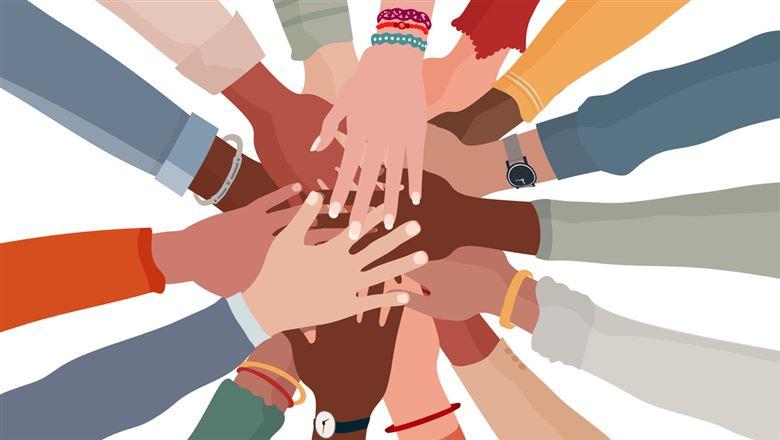Juan Amador, FASAE, CAE
Juan Amador, FASAE, CAE, is director, constituent engagement, at the Association of American Medical Colleges and chair-elect of ASAE’s CAE Commission.

As National Hispanic Heritage Month kicks off, it’s a good time to explore ways to include and advance Latinos, while also ensuring your organization is more successful, diverse, equitable, and inclusive.
Is your association as welcoming as you think for Latino/a/x professionals? According to a 2016 Center for Talent Innovation (CTI) study [PDF], 76 percent of Latinos feel uncomfortable being their authentic selves at work and modify their appearance, body language, and communication style as a result.
This is bad news on many fronts, as we all know that innovation flourishes when employees feel welcome and included and confident that their ideas are heard and valued. While this finding may seem shocking, for those of us who are Latino/a/x, this is a way of life. But it doesn’t have to be. As National Hispanic Heritage Month begins, here are some tips for helping your organization to be more inclusive.
Advance DEI within your organization and industry. Research has shown that diverse organizations have better performance, as well as reduced staff turnover and absenteeism costs. In addition, by prioritizing DEI, you’ll likely find that your diverse employees are more likely to stay, recruit others, and have higher job satisfaction. Latinos embrace their culture and shared values to advance innovations, collaborations, partnerships, and trustworthiness in their communities and workplaces.
Build a culture of belonging. Creating an organization where Latino professionals feel a sense of belonging and thrive is crucial for the future of the association industry. According to CTI [PDF], belonging means that employees are seen for their unique contributions, connected to coworkers, supported in their daily work and career development, and proud of their organization’s values and purpose.
Implement immediate strategies to attract Latino talent. There are no formulas or one-size-fits-all solutions, so start by inviting Latinos association professionals to share what works and does not work for their community. Listen, understand, and accept that there will be uncomfortable moments and conversations. You can commit to developing programs, services, or resources by capitalizing on insights and, most important, affirming Latino talent with intentional actions, such as connecting with Hispanic-serving institutions for recruitment or ensuring Latino representation in your DEI effort.
We are stronger associations when we have staff that bring different perspectives, lived experiences, and shared commitments to inclusion.
Hire Latino association professionals. According to the U.S. Bureau of Labor Statistics, Hispanics will comprise 20 percent of the workforce by 2024. Six out of 10 Hispanics are millennials or younger, and the median age is 28 years, six years younger than the median in the country. That means Latinos are an important part in developing and attracting the current and future association workforce.
Associations are stronger when they have staff who bring different perspectives, lived experiences, and shared commitments to inclusion. Latino professionals have been “the only one” or “one of a few” in associations and have had to forge paths and build support systems so they can feel like they belong and can advance. Often, being the only one means carrying an extra burden—the burden to represent all Latinos and dispel biases.
Enhance your internal leadership. Can staff see themselves reflected in your leadership? How many Latinos hold leadership roles in your organization? Association leaders need to be intentional about the Latino pipeline. If you are not receiving Latino applicants, chances are you will need to look in different places. Connect with Hispanic-serving institutions, associations, or affinity groups to recruit Latinos. In addition, tap into your current employees’ networks.
Become an ally for the Latino community. As a leader, make yourself vulnerable and available. Let people know you do not have all the answers, and welcome contributions and guidance to enhance the Latino association workforce. Invest in education and training to equip yourself with the skills necessary to be an inclusive leader and ally who can support ideas that are not immediately familiar. Belonging doesn’t happen by chance; it may require substantial effort. Set expectations at all levels of the organization to create a culture of belonging.
Be a mentor or, better yet, be a sponsor. There is evidence that minority groups and women are over-mentored and under-sponsored. Use your position, experience, and influence to provide Latinos new opportunities that are often out of reach, such as connecting them to your networks or with career-advancement opportunities. Give ongoing feedback so that they can course-correct, feel valued, and be motivated to do their best.
Celebrate Latinos. As we celebrate National Hispanic Heritage Month, we encourage you to reflect and think about ways you can engage with and empower one of the fastest-growing ethnic groups in the country. Need help? Use the National Hispanic Heritage Month Toolkit to make this celebration “bigger, bolder, and better.” Above all, encourage an environment where authenticity is valued, and diversity is celebrated.